Early-Age Cracking in Concrete: Causes, Consequences, Remedial Measures, and Recommendations
Abstract
1. Introduction
2. Different Types of Early-Age Crack
3. Causes of Early-Age Cracking
4. Factors Affecting Early-Age Cracking
4.1. Design Process
4.2. Materials and Mix Parameters
4.3. Construction Procedures
4.4. Environmental Conditions
4.5. External Loading Conditions
4.6. Summary
5. Consequences of Early-Age Cracking
6. Modeling of Early-Age Cracking
7. Remedial Measures for Early-Age Cracking
7.1. Materials and Design Based Remedial Measures
- Increase the girder spacing to decrease girder restraint [107].
- Avoid specifying the decks with a thickness of 165 mm (6 ½ in.) and less [107].
- Limit the transverse reinforcement steel size to No. 5 at 140 mm spacing (5 ½ in.) and/or No. 6 spaced at 178 mm (7 in.) [107].
- Increase the ratio of concrete cover to reinforcement bar diameter [53].
7.2. Construction Based Remedial Measures
- Deck pouring should only take place when the ambient temperature is above 7 °C (40 °F) and below 32 °C (90 °F), but it should be avoided when the maximum ambient temperature change is expected to be equal or greater than 10 °C (50 °F) [107].
- Concrete pouring should be avoided in windy conditions [28].
- Concrete casting should be restricted to an ambient temperature in the range of from 7 °C (40 °F) to 27 °C (80 °F), maintaining the concrete temperature at or above 10 °C (50 °F) for the first 72 h, and limiting the fresh concrete temperature at placement to 27 °C (80 °F) [105].
8. Major Recommendations
- Determine whether the cracks are isolated or widespread and gather information relevant to the possible causes of cracking in concrete;
- Apply an iteration process to identify one or more major causes and verify the major causes one by one with field observations;
- Collect samples by coring and conducting laboratory testing when more rigorous data evaluation is required;
- Employ one or more nondestructive on-site assessment such as ultrasonic testing and elastic modulus measurement through ambient response method to monitor and assess the early-age concrete properties that are intimately related with the early-age cracking in concrete elements;
- Thoroughly review all materials and design features as well as check the major construction procedures if the cracks are widespread;
- Develop a database to record, analyze, and examine the formation and causes of early-age cracks in concrete. The type, source, and location of cracks may vary. The database will allow for more accurate prediction and simulation of early-age cracks;
- Improve workers’ skills by providing necessary training prior to placement in concrete construction jobs;
- Allow third-party examination for the analysis of crack-causing factors and the necessary remedial measures;
- Smear dry cement powder on the concrete surface in the presence of bleed water to reduce the probability of the formation of early-age cracks in newly placed concrete elements;
- Investigate how the structural capacity and function of concrete elements are affected due to early-age cracking;
- Develop models that can account for the effect of reinforcement, particularly in the case of high-strength concrete.
9. Concluding Remarks
Author Contributions
Funding
Acknowledgments
Conflicts of Interest
References
- ACPA. Concrete Crack and Partial-Depth Spall Repair Manual for Airfields; American Concrete Pavement Association: Rosemont, IL, USA, 2003. [Google Scholar]
- Bentz, D.P. A Review of Early-Age Properties of Cement-Based Materials. Cem. Concr. Res. 2008, 38, 196–204. [Google Scholar] [CrossRef]
- Stark, J. Recent Advances in the Field of Cement Hydration and Microstructure Analysis. Cem. Concr. Res. 2011, 41, 666–678. [Google Scholar] [CrossRef]
- Kim, J.H.; Ferron, R.P.; Shah, S.P. Fresh Concrete and Its Significance for Sustainability. J. Sustain. Cem.-Based Mater. 2012, 1, 16–23. [Google Scholar] [CrossRef]
- Kovler, K.; Roussel, N. Properties of Fresh and Hardened Concrete. Cem. Concr. Res. 2011, 41, 775–792. [Google Scholar] [CrossRef]
- Nehdi, M.; Soliman, A. Early-age Properties of Concrete: Overview of Fundamental Concepts and State-of-the Art Research. Proc. Inst. Civ. Eng. Constr. Mater. 2011, 164, 57–77. [Google Scholar] [CrossRef]
- Reinhardt, H.W. Characterization of Fresh and Early Age Concrete Using NDT. In Nondestructive Testing of Materials and Structures; Büyüköztürk, O., Taşdemir, M.A., Güneş, O., Akkaya, Y., Eds.; Springer Netherlands: Dordrecht, The Netherlands, 2013; pp. 407–421. ISBN 978-94-007-0723-8. [Google Scholar]
- Mihashi, H.; Leite, J.P.D.B. State-of-the-Art Report on Control of Cracking in Early Age Concrete. J. Adv. Concr. Technol. 2004, 2, 141–154. [Google Scholar] [CrossRef]
- Emborg, M.; Bernander, S. Assessment of Risk of Thermal Cracking in Hardening Concrete. J. Struct. Eng. 1994, 120, 2893–2912. [Google Scholar] [CrossRef]
- Klemczak, B.; Knoppik-Wróbel, A. Early Age Thermal and Shrinkage Cracks in Concrete Structures–Description of The Problem. Archit.-Civ. Eng.-Environ. 2011, 4, 35–48. [Google Scholar]
- Holt, E.E. Early Age Autogenous Shrinkage of Concrete; Technical Research Centre of Finland: Espoo, Finland, 2001; Volume 446, ISBN 951-38-5870-7. [Google Scholar]
- Holt, E.; Leivo, M. Cracking Risks Associated with Early Age Shrinkage. Cem. Conc. Compos. 2004, 26, 521–530. [Google Scholar] [CrossRef]
- ACI Committee 224. Causes, Evaluation, and Repair of Cracks in Concrete Structures; American Concrete Institute: Farmington Hills, MI, USA, 2007; ISBN 9995899051. [Google Scholar]
- Issa, M.A. Investigation of Cracking in Concrete Bridge Decks at Early Ages. J. Bridge Eng. 1999, 4, 116–124. [Google Scholar] [CrossRef]
- Hiller, J.E.; Roesler, J.R. Determination of Critical Concrete Pavement Fatigue Damage Locations Using Influence Lines. J. Transp. Eng. 2005, 131, 599–607. [Google Scholar] [CrossRef]
- Bamforth, P.B. Early-Age Thermal Crack Control in Concrete; Construction Industry Research and Information Association: London, UK, 2007; p. 112. ISBN 978-0860176602. [Google Scholar]
- Sule, M.; van Breugel, K. The Effect of Reinforcement on Early-Age Cracking due to Autogenous Shrinkage and Thermal Effects. Cem. Concr. Compos. 2004, 26, 581–587. [Google Scholar] [CrossRef]
- Jensen, O.M.; Hansen, P.F. Influence of Temperature on Autogenous Deformation and Relative Humidity Change in Hardening Cement Paste. Cem. Concr. Res. 1999, 29, 567–575. [Google Scholar] [CrossRef]
- Meagher, T.; Shanahan, N.; Buidens, D.; Riding, K.A.; Zayed, A. Effects of Chloride and Chloride-Free Accelerators Combined with Typical Admixtures on the Early-Age Cracking Risk of Concrete Repair Slabs. Constr. Build. Mater. 2015, 94, 270–279. [Google Scholar] [CrossRef]
- Perumal, V. Early-Age Thermal Stress Analysis of Concrete. Master’s Thesis, National University of Singapore, Singapore, 2009. [Google Scholar]
- Harrison, T. Early-Age Thermal Crack Control in Concrete; CIRIA: London, UK, 1981; ISBN 0860171663. [Google Scholar]
- Khan, A.A. Concrete Properties and Thermal Stress Analysis of Members at Early Ages. Ph.D. Thesis, McGill University Canada, Montreal, QC, Canada, 1995. [Google Scholar]
- Branch, J.; Hannant, D.; Mulheron, M. Factors Affecting the Plastic Shrinkage Cracking of High-Strength Concrete. Mag. Concr. Res. 2002, 54, 347–354. [Google Scholar] [CrossRef]
- Holt, E. Contribution of Mixture Design to Chemical and Autogenous Shrinkage of Concrete at Early Ages. Cem. Concr. Res. 2005, 35, 464–472. [Google Scholar] [CrossRef]
- Mehta, P.K.; Monteiro, P.J. Concrete: Microstructure, Properties, and Materials; McGraw-Hill: New York, NY, USA, 2006; ISBN 978-0071797870. [Google Scholar]
- Abel, J.; Hover, K. Effect of Water/Cement Ratio on the Early Age Tensile Strength of Concrete. J. Transp. Res. Board 1998, 1610, 33–38. [Google Scholar] [CrossRef]
- Nguyen, D.; Dao, V. Tensile Properties of Early-Age Concrete. In Proceedings of the 27th Biennial National Conference of the Concrete Institute of Australia in conjunction with the 69th RILEM Week, Melbourne, Australia, 31 August–2 September 2015; pp. 1314–1324. [Google Scholar]
- Krauss, P.D.; Rogalla, E.A. Transverse Cracking in Newly Constructed Bridge Decks; National Academy Press: Washington, DC, USA, 1996; ISBN 0309057167. [Google Scholar]
- Bažant, Z.P.; Hauggaard, A.B.; Baweja, S.; Ulm, F.-J. Microprestress-Solidification Theory for Concrete Creep. I: Aging and Drying Effects. J. Eng. Mech. 1997, 123, 1188–1194. [Google Scholar] [CrossRef]
- Bažant, Z.P.; Cusatis, G.; Cedolin, L. Temperature Effect on Concrete Creep Modeled by Microprestress-Solidification Theory. J. Eng. Mech. 2004, 130, 691–699. [Google Scholar] [CrossRef]
- Pickett, G. The Effect of Change in Moisture-Content on the Creep of Concrete under a Sustained Load. J. Proc. 1942, 333–356. [Google Scholar] [CrossRef]
- Bažant, Z.P.; Xi, Y. Drying Creep of Concrete: Constitutive Model and New Experiments Separating Its Mechanisms. Mater. Struct. 1994, 27, 3–14. [Google Scholar] [CrossRef]
- De Schutter, G.; Taerwe, L. Specific Heat and Thermal Diffusivity of Hardening Concrete. Mag. Concr. Res. 1995, 47, 203–208. [Google Scholar] [CrossRef]
- Wei, Y.; Hansen, W. Tensile Creep Behavior of Concrete Subject to Constant Restraint at Very Early Ages. J. Mater. Civ. Eng. 2012, 25, 1277–1284. [Google Scholar] [CrossRef]
- Issa, M.A.; Yousif, A.A.; Issa, M.A. Effect of Construction Loads and Vibrations on New Concrete Bridge Decks. J. Bridge Eng. 2000, 5, 249–258. [Google Scholar] [CrossRef]
- Ah-Sha, H.H.; Sanders, D.H.; Saiidi, M.S. Early Age Shrinkage and Cracking of Nevada Concrete Bridge Decks; National Technical Information Service: Springfield, VA, USA, 2001. [Google Scholar]
- Combrinck, R.; Boshoff, W. Influence of Restraint on the Early Age Cracking of Concrete with and without Fibres. In Proceedings of the 8th RILEM International Symposium on Fiber Reinforced Concrete: Challenges and Opportunities (BEFIB 2012), Guimarães, Portugal, 19–21 September 2012; Barros, J.A.O., Ed.; RILEM Publications SARL: Guimarães, Portugal, 2012; pp. 86–99. [Google Scholar]
- De Schutter, G.; Taerwe, L. Estimation of Early-Age Thermal Cracking Tendency of Massive Concrete Elements by means of Equivalent Thickness. ACI Mater. J. 1996, 93, 403–408. [Google Scholar] [CrossRef]
- Ulm, F.-J.; Coussy, O. What Is a “Massive” Concrete Structure at Early Ages? Some Dimensional Arguments. J. Eng. Mech. 2001, 127, 512–522. [Google Scholar] [CrossRef]
- Dakhil, F.H.; Cady, P.D.; Carrier, R.E. Cracking of Fresh Concrete as Related to Reinforcement. ACI J. Proc. 1975, 72, 421–428. [Google Scholar] [CrossRef]
- Harsh, S.; Darwin, D. Effects of Traffic Induced Vibrations on Bridge Deck Repairs; University of Kansas Center for Research, Inc.: Lawrence, KS, USA, 1984. [Google Scholar]
- Liu, X.; Yuan, Y.; Su, Q. Sensitivity Analysis of the Early-Age Cracking Risk in an Immersed Tunnel. Struct. Concr. 2014, 15, 179–190. [Google Scholar] [CrossRef]
- Massazza, F. Pozzolanic Cements. Cem Concr. Compos. 1993, 15, 185–214. [Google Scholar] [CrossRef]
- Lura, P.; van Breugel, K.; Maruyama, I. Effect of Curing Temperature and Type of Cement on Early-Age Shrinkage of High-Performance Concrete. Cem. Conc. Res. 2001, 31, 1867–1872. [Google Scholar] [CrossRef]
- Bentz, D.P.; Sant, G.; Weiss, J. Early-Age Properties of Cement-Based Materials. I: Influence of Cement Fineness. J. Mater. Civ. Eng. 2008, 20, 502–508. [Google Scholar] [CrossRef]
- Ramézani, H.; Mounanga, P.; Jeong, J.; Bouasker, M. Role of Cement Paste Composition on the Self Induced Stress in Early-Age Mortars: Application of the Cosserat Size Number. Cem. Concr. Compos. 2013, 39, 43–59. [Google Scholar] [CrossRef]
- Kockal, N.U.; Turker, F. Effect of Environmental Conditions on the Properties of Concretes with Different Cement Types. Constr. Build. Mater. 2007, 21, 634–645. [Google Scholar] [CrossRef]
- Alsayed, S.; Amjad, M. Effect of Curing Conditions on Strength, Porosity, Absorptivity, and Shrinkage of Concrete in Hot and Dry Climate. Cem. Conc. Res. 1994, 24, 1390–1398. [Google Scholar] [CrossRef]
- Bentz, D.P.; Peltz, M.A.; Winpigler, J. Early-age Properties of Cement-Based Materials. II: Influence of Water-to-Cement Ratio. J. Mater. Civil Eng. 2009, 21, 512–517. [Google Scholar] [CrossRef]
- Powers, T.C.; Brownyard, T.L. Studies of the Physical Properties of Hardened Portland Cement Paste. ACI J. Proc. 1946, 101–132. [Google Scholar] [CrossRef]
- Lawrence, A.M.; Tia, M.; Ferraro, C.C.; Bergin, M. Effect of Early Age Strength on Cracking in Mass Concrete Containing Different Supplementary Cementitious Materials: Experimental and Finite-Element Investigation. J. Mater. Civ. Eng. 2011, 24, 362–372. [Google Scholar] [CrossRef]
- Shah, S.P.; Wang, K.; Weiss, W.J. Mixture Proportioning for Durable Concrete: Challenges and Changes. Concr. Int. 2000, 22, 73–78. [Google Scholar]
- Dippenaar, J.D. The Tensile Properties of Early Age Concrete and The Experimental Apparatus Required for Its Determination. Master’s Thesis, Stellenbosch University, Stellenbosch, South Africa, 2015. [Google Scholar]
- Igarashi, S.; Bentur, A.; Kovler, K. Stresses and Creep Relaxation Induced in Restrained Autogenous Shrinkage of High-Strength Pastes and Concretes. Adv. Cem. Res. 1999, 11, 169–177. [Google Scholar] [CrossRef]
- Sule, M.; van Breugel, K. Cracking Behaviour of Reinforced Concrete Subjected to Early-Age Shrinkage. Mater. Struct. 2001, 34, 284–292. [Google Scholar] [CrossRef]
- Cortas, R.; Rozière, E.; Staquet, S.; Hamami, A.; Loukili, A.; Delplancke-Ogletree, M.-P. Effect of the Water Saturation of Aggregates on the Shrinkage Induced Cracking Risk of Concrete at Early Age. Cem. Concr. Compos. 2014, 50, 1–9. [Google Scholar] [CrossRef]
- Dao, V.T.N.; Morris, P.H.; Dux, P.F. Crack Propagation in Concrete at Very Early Ages. Mag. Concr. Res. 2014, 66, 643–651. [Google Scholar] [CrossRef]
- Hua, C.; Ehrlacher, A.; Acker, P. Analyses and Models of the Autogenous Shrinkage of Hardening Cement Paste: II. Modelling at Scale of Hydrating Grains. Cem. Concr. Res. 1997, 27, 245–258. [Google Scholar] [CrossRef]
- Maclnnis, C.; Kosteniuk, P.W. Effectiveness of Revibration and High-Speed Slurry Mixing for Producing High-Strength Concrete. ACI J. Proc 1979, 76, 1255–1265. [Google Scholar] [CrossRef]
- Silfwerbrand, J. The Influence of Traffic-Induced Vibrations on the Bond between Old and New Concrete; Department of Structural Mechanics and Engineering, Royal Institute of Technology: Stockholm, Sweden, 1992. [Google Scholar]
- Harsh, S.; Darwin, D. Traffic-Induced Vibrations and Bridge Deck Repairs. Concr. Int. 1986, 8, 36–42. [Google Scholar]
- Ansell, A.; Silfwerbrand, J. The Vibration Resistance of Young and Early-Age Concrete. Struct. Concr. 2003, 4, 125–134. [Google Scholar] [CrossRef]
- Akins, K.P.; Dixon, D.E. Concrete Structures and Construction Vibrations; American Concrete Institute: Farmington Hills, MI, USA, 1979; pp. 213–247. [Google Scholar]
- Dowding, C.H.; Dowding, C. Construction Vibrations; Prentice Hall: Upper Saddle River, NJ, USA, 1996; Volume 610, ISBN 978-0132991087. [Google Scholar]
- Shen, D.; Jiang, J.; Shen, J.; Yao, P.; Jiang, G. Influence of Curing Temperature on Autogenous Shrinkage and Cracking Resistance of High-Performance Concrete at an Early Age. Constr. Build. Mater. 2016, 103, 67–76. [Google Scholar] [CrossRef]
- Shen, D.; Jiang, J.; Wang, W.; Shen, J.; Jiang, G. Tensile Creep and Cracking Resistance of Concrete with Different Water-To-Cement Ratios at Early Age. Constr. Build. Mater. 2017, 146, 410–418. [Google Scholar] [CrossRef]
- Krell, W.C. The Effect of Coal Mill Vibration on Fresh Concrete. Concr. Int. 1979, 1, 31–34. [Google Scholar]
- Hua, C.; Acker, P.; Ehrlacher, A. Analyses and Models of the Autogenous Shrinkage of Hardening Cement Paste: I. Modelling at Macroscopic Scale. Cem. Concr. Res. 1995, 25, 1457–1468. [Google Scholar] [CrossRef]
- Charron, J.; Zuber, B.; Marchand, J.; Bissonnette, B.; Pigeon, M. Influence of Temperature on the Early-Age Behavior of Concrete. In Proceedings of the International RILEM Symposium on Concrete Science and Engineering: A Tribute to Arnon Bentur, Evanston, IL, USA, 22–24 March 2004; pp. 67–84. [Google Scholar]
- Oh, B.H.; Choi, S.C.; Cha, S.W. Temperature and Relative Humidity Analysis in Early-Age Concrete Decks of Composite Bridges. In Measuring, Monitoring and Modeling Concrete Properties; Konsta-Gdoutos, M.S., Ed.; Springer Netherlands: Dordrecht, The Netherlands, 2006; pp. 305–316. ISBN 978-1-4020-5104-3. [Google Scholar]
- Briffaut, M.; Benboudjema, F.; Torrenti, J.M.; Nahas, G. Numerical Analysis of the Thermal Active Restrained Shrinkage Ring Test to Study the Early Age Behavior of Massive Concrete Structures. Eng. Struct. 2011, 33, 1390–1401. [Google Scholar] [CrossRef]
- Mustafa, M.; Yusof, K. Mechanical Properties of Hardened Concrete in Hot-Humid Climate. Cem. Concr. Res. 1991, 21, 601–613. [Google Scholar] [CrossRef]
- Cusson, D.; Repette, W.L. Early-Age Cracking in Reconstructed Concrete Bridge Barrier Walls. ACI Mater. J. 2000, 97, 438–446. [Google Scholar] [CrossRef]
- Furr, H.L.; Fouad, F.H. Bridge Slab Concrete Placed Adjacent to Moving Live Loads; Texas Transportation Institute: College Station, TX, USA, 1981. [Google Scholar]
- Manning, D.G. Effects of Traffic-Induced Vibrations on Bridge-Deck Repairs. In NCHRP Synthesis of Highway Practice; Transportation Research Board: Washington, DC, USA, 1981. [Google Scholar]
- Van Breugel, K. Self-Healing Material Concepts as Solution for Aging Infrastructure. In Proceedings of the 37th Conference on Our World in Concrete & Structures, Singapore, 29–31 August 2012; pp. 1051–1057. [Google Scholar]
- De Schutter, G. Durability of Marine Concrete Structures Damaged by Early Age Thermal Cracking. In Proceedings of the International RILEM Workshop on Life Prediction and Aging Management of Concrete Structures, Cannes, France, 16–17 October 2000; pp. 185–194. [Google Scholar]
- Ba, H.; Su, A.; Gao, X.; Tao, Q. Cracking Tendency of Restrained Concrete at Early Ages. J. Wuhan Univ. Technol. Mater. Sci. Ed. 2008, 23, 263–267. [Google Scholar] [CrossRef]
- Huang, H.; Ye, G.; Qian, C.; Schlangen, E. Self-healing in Cementitious Materials: Materials, Methods and Service Conditions. Mater. Des. 2016, 92, 499–511. [Google Scholar] [CrossRef]
- Kumar, S.V.; GangaRao, H.V. Fatigue Response of Concrete Decks Reinforced with FRP Rebars. J. Struct. Eng. 1998, 124, 11–16. [Google Scholar] [CrossRef]
- De Borst, R.; Van den Boogaard, A. Finite-Element Modeling of Deformation and Cracking in Early-Age Concrete. J. Eng. Mech. 1994, 120, 2519–2534. [Google Scholar] [CrossRef]
- Francesco, P.; Agnieszka, K.; Vít;milauer; Matthieu, B.; Pierre, R. Numerical Modelling. In Thermal Cracking of Massive Concrete Structures; Fairbairn, E.M., Azenha, M., Eds.; Springer: Berlin, Germany, 2018; pp. 182–255. ISBN 3319766163. [Google Scholar]
- Lacarrière, L.; Knoppik, A.; da Silva, W.R.L.; Honorio, T.; Šmilauer, V.; Asamoto, S.; Fairbairn, E.M.R. Hydration and Heat Development. In Thermal Cracking of Massive Concrete Structures; Fairbairn, E.M., Azenha, M., Eds.; Springer: Berlin, Germany, 2018; pp. 15–46. ISBN 3319766163. [Google Scholar]
- Ulm, F.-J.; Coussy, O. Modeling of Thermochemomechanical Couplings of Concrete at Early Ages. J. Eng. Mech. 1995, 121, 785–794. [Google Scholar] [CrossRef]
- Ulm, F.-J.; Coussy, O. Strength Growth as Chemo-Plastic Hardening in Early Age Concrete. J. Eng. Mech 1996, 122, 1123–1132. [Google Scholar] [CrossRef]
- Faria, R.; Azenha, M.; Figueiras, J.A. Modelling of Concrete at Early Ages: Application to an Externally Restrained Slab. Cem. Concr. Compos. 2006, 28, 572–585. [Google Scholar] [CrossRef]
- Gawin, D.; Pesavento, F.; Schrefler, B.A. Hygro-Thermo-Chemo-Mechanical Modelling of Concrete at Early Ages and Beyond. Part I: Hydration and Hygro-Thermal Phenomena. Int. J. Numer. Methods Eng. 2006, 67, 299–331. [Google Scholar] [CrossRef]
- Gawin, D.; Pesavento, F.; Schrefler, B.A. Hygro-Thermo-Chemo-Mechanical Modelling of Concrete at Early Ages and Beyond. Part II: Shrinkage and Creep of Concrete. Int. J. Numer. Methods Eng. 2006, 67, 332–363. [Google Scholar] [CrossRef]
- De Schutter, G. Finite Element Simulation of Thermal Cracking in Massive Hardening Concrete Elements Using Degree of Hydration Based Material Laws. Comput. Struct. 2002, 80, 2035–2042. [Google Scholar] [CrossRef]
- Azenha, M.; Faria, R.; Ferreira, D. Identification of Early-Age Concrete Temperatures and Strains: Monitoring and Numerical Simulation. Cem. Conc. Compos. 2009, 31, 369–378. [Google Scholar] [CrossRef]
- Li, K.; Ju, Y.; Han, J.; Zhou, C. Early-Age Stress Analysis of a Concrete Diaphragm Wall through Tensile Creep Modeling. Mater. Struct. 2009, 42, 923–935. [Google Scholar] [CrossRef]
- Zhou, J.; Chen, X.; Zhang, J.; Wang, Y. Internal Relative Humidity Distribution in Concrete Considering Self-Desiccation at Early Ages. Int. J. Phys. Sci. 2011, 6, 1604–1610. [Google Scholar] [CrossRef]
- Benboudjema, F.; Torrenti, J.M. Early-Age Behaviour of Concrete Nuclear Containments. Nucl. Eng. Des. 2008, 238, 2495–2506. [Google Scholar] [CrossRef]
- Wu, S.; Huang, D.; Lin, F.-B.; Zhao, H.; Wang, P. Estimation of Cracking Risk of Concrete at Early Age Based on Thermal Stress Analysis. J. Therm. Anal. Calorim. 2011, 105, 171–186. [Google Scholar] [CrossRef]
- Briffaut, M.; Benboudjema, F.; Torrenti, J.-M.; Nahas, G. Effects of Early-Age Thermal Behaviour on Damage Risks in Massive Concrete Structures. Eur. J. Environ. Civ. Eng. 2012, 16, 589–605. [Google Scholar] [CrossRef]
- Kang, S.-T.; Kim, J.-S.; Lee, Y.; Park, Y.-D.; Kim, J.-K. Moisture Diffusivity of Early Age Concrete Considering Temperature and Porosity. KSCE J. Civ. Eng. 2012, 16, 179–188. [Google Scholar] [CrossRef]
- Boshoff, W.P.; Combrinck, R. Modelling the Severity of Plastic Shrinkage Cracking in Concrete. Cem. Concr. Res. 2013, 48, 34–39. [Google Scholar] [CrossRef]
- Klemczak, B.; Knoppik-Wróbel, A. Comparative Study of Methods for Analysis of Early-Age Thermal–Shrinkage Stresses in Externally Restrained Concrete Structures. In Proceedings of the 10th International Conference on New Trends in Statics and Dynamics of Buildings, Faculty of Civil Engineering STU Bratislava, Bratislava, Slovakia, 3–5 October 2012; pp. 41–44. [Google Scholar]
- Park, K.-B. Prediction of Temperature and Moisture Distributions in Hardening Concrete by Using a Hydration Model. Archit. Res. 2012, 14, 153–161. [Google Scholar] [CrossRef]
- Yuan, Y.; Wan, Z. Prediction of Cracking within Early-Age Concrete Due to Thermal, Drying and Creep Behavior. Cem. Conc. Res. 2002, 32, 1053–1059. [Google Scholar] [CrossRef]
- Bazant, Z.P.; L’Hermite, R. Mathematical Modeling of Creep and Shrinkage of Concrete; Wiley: New York, NY, USA, 1988; ISBN 0471920576. [Google Scholar]
- Kristiawan, S.A. Performance Criteria to Assess Shrinkage Cracking Tendency in Concrete Overlay. Procedia. Eng. 2013, 54, 82–100. [Google Scholar] [CrossRef]
- Nehdi, M.L.; Soliman, A.M. Artificial Intelligence Model for Early-Age Autogenous Shrinkage of Concrete. ACI Mater. J. 2012, 109, 353–362. [Google Scholar] [CrossRef]
- Wyrzykowski, M.; Sanahuja, J.; Charpin, L.; Königsberger, M.; Hellmich, C.; Pichler, B.; Valentini, L.; Honório, T.; Smilauer, V.; Hajkova, K. Numerical Benchmark Campaign of COST Action TU1404—Microstructural Modelling. RILEM Tech. Lett. 2018, 2, 99–107. [Google Scholar] [CrossRef]
- Shing, P.B.; Abu-Hejleh, N. Cracking in Bridge Decks: Causes and Mitigation; Colorado Department of Transportation: Denver, CO, USA, 1999. [Google Scholar]
- Babaei, K.; Purvis, R.L. Prevention of Cracks in Concrete Bridge Decks; Pennsylvania Department of Transportation: Harrisburg, PA, USA, 1995.
- French, C.E.; Eppers, L.; Le, Q.; Hajjar, J. Transverse Cracking in Bridge Decks: Field Study; Minnesota Department of Transportation: Saint Paul, MN, USA, 1999.
- Kwak, H.-G.; Ha, S.-J. Plastic Shrinkage Cracking in Concrete Slabs. Part II: Numerical Experiment and Prediction of Occurrence. Mag. Concr. Res. 2006, 58, 517–532. [Google Scholar] [CrossRef]
- Combrinck, R.; Boshoff, W.P. Typical Plastic Shrinkage Cracking Behaviour of Concrete. Mag. Concr. Res. 2013, 65, 486–493. [Google Scholar] [CrossRef]
- Afzal, S.; Shahzada, K.; Fahad, M.; Saeed, S.; Ashraf, M. Assessment of Early-Age Autogenous Shrinkage Strains in Concrete Using Bentonite Clay as Internal Curing Technique. Constr. Build. Mater. 2014, 66, 403–409. [Google Scholar] [CrossRef]
- Fernandes, F.; Manari, S.; Aguayo, M.; Santos, K.; Oey, T.; Wei, Z.; Falzone, G.; Neithalath, N.; Sant, G. On the Feasibility of Using Phase Change Materials (PCMs) to Mitigate Thermal Cracking in Cementitious Materials. Cem. Concr. Compos. 2014, 51, 14–26. [Google Scholar] [CrossRef]
- Šavija, B.; Schlangen, E. Use of Phase Change Materials (PCMs) to Mitigate Early Age Thermal Cracking in Concrete: Theoretical Considerations. Constr. Build. Mater. 2016, 126, 332–344. [Google Scholar] [CrossRef]
- Šavija, B.; Zhang, H.; Schlangen, E. Influence of Microencapsulated Phase Change Material (PCM) Addition on (Micro) Mechanical Properties of Cement Paste. Materials 2017, 10, 863. [Google Scholar] [CrossRef] [PubMed]
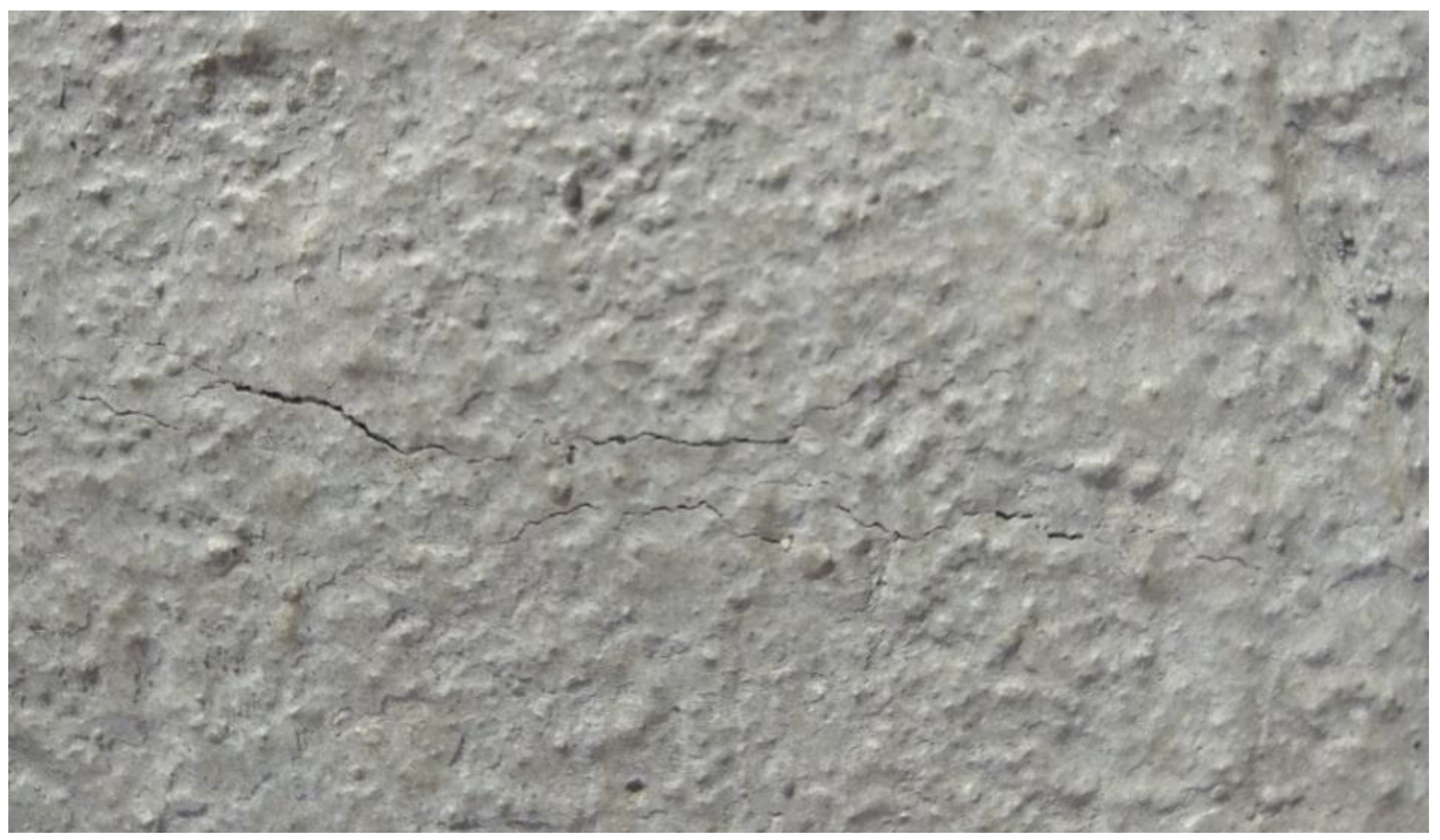
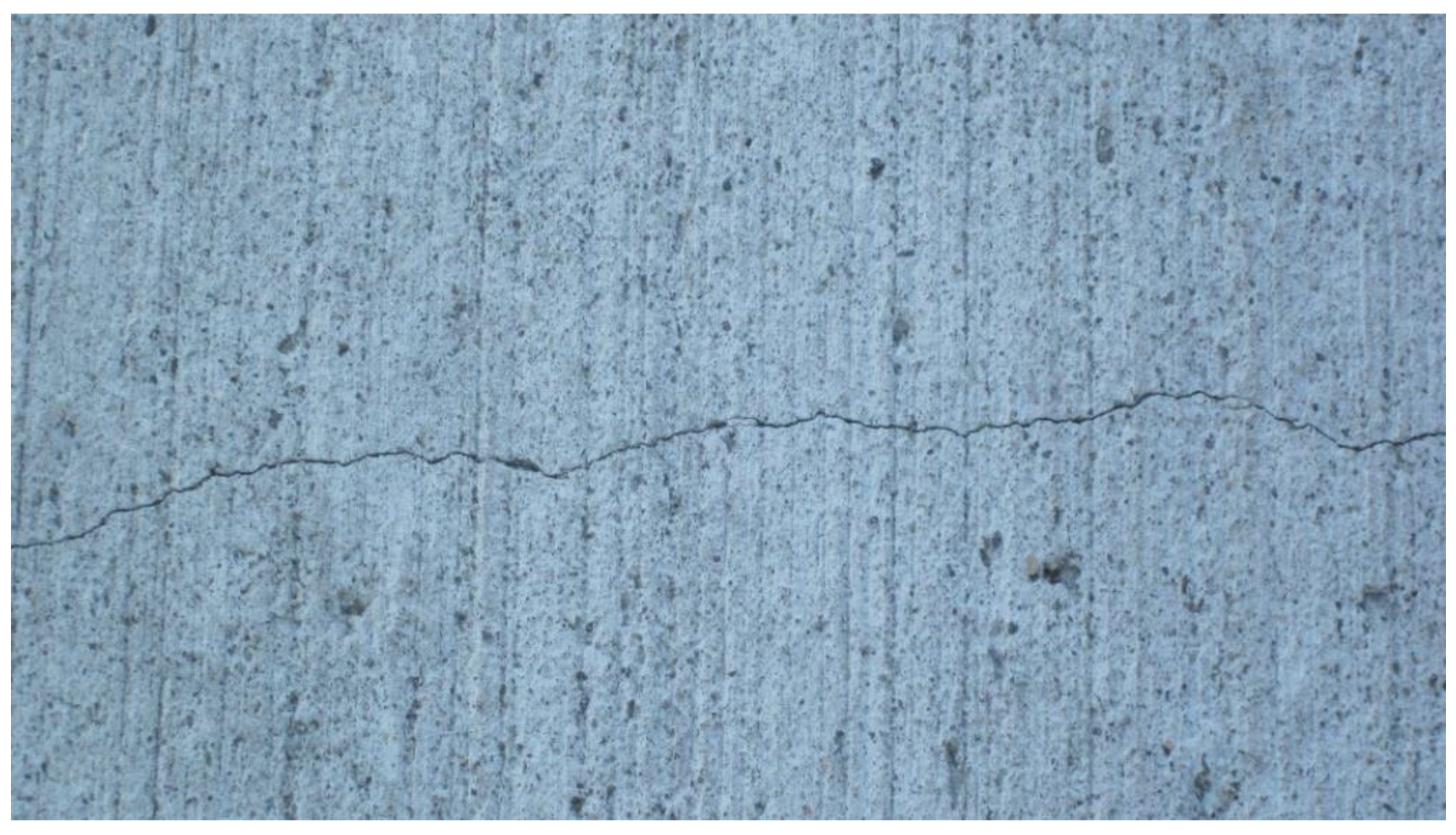
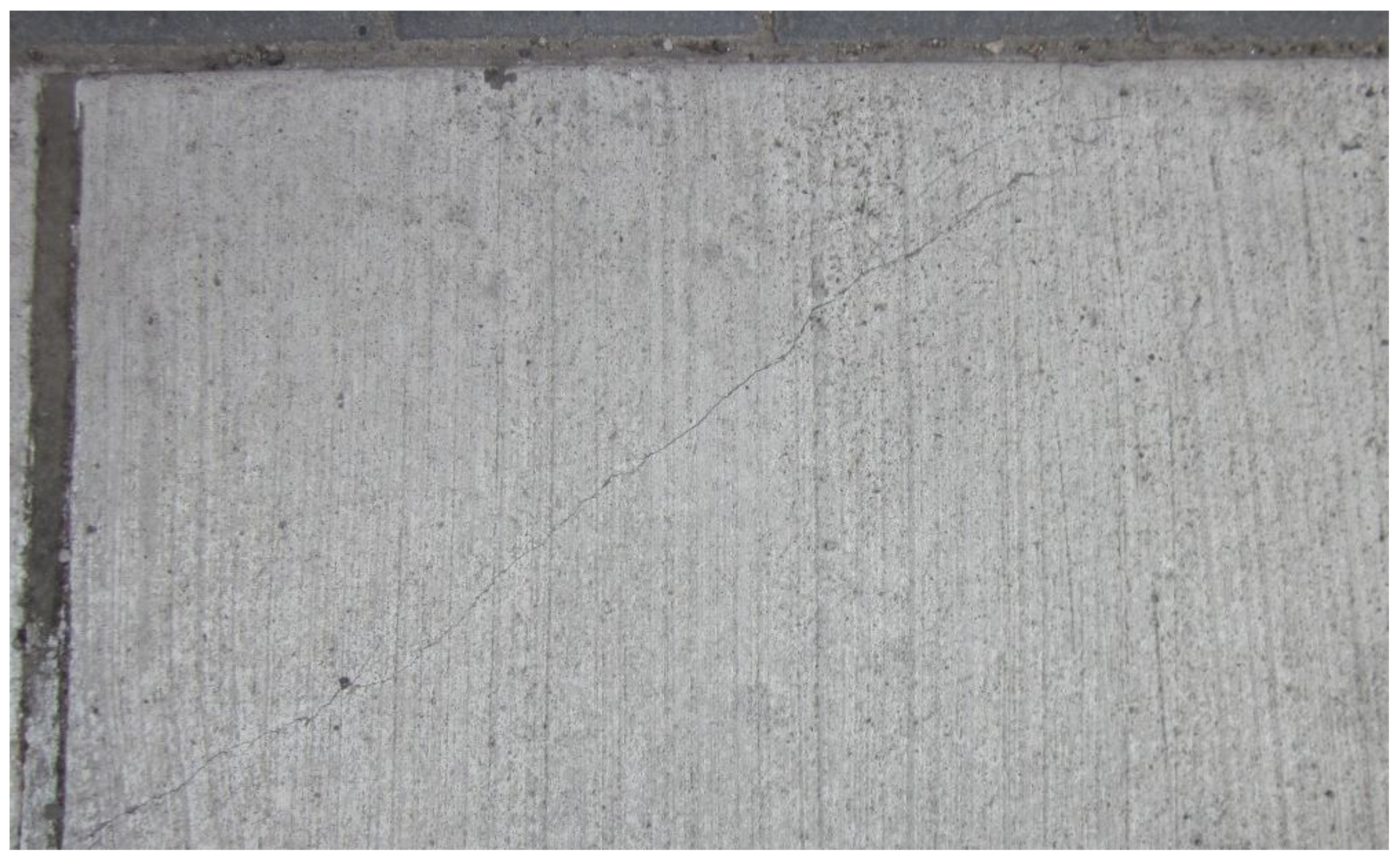
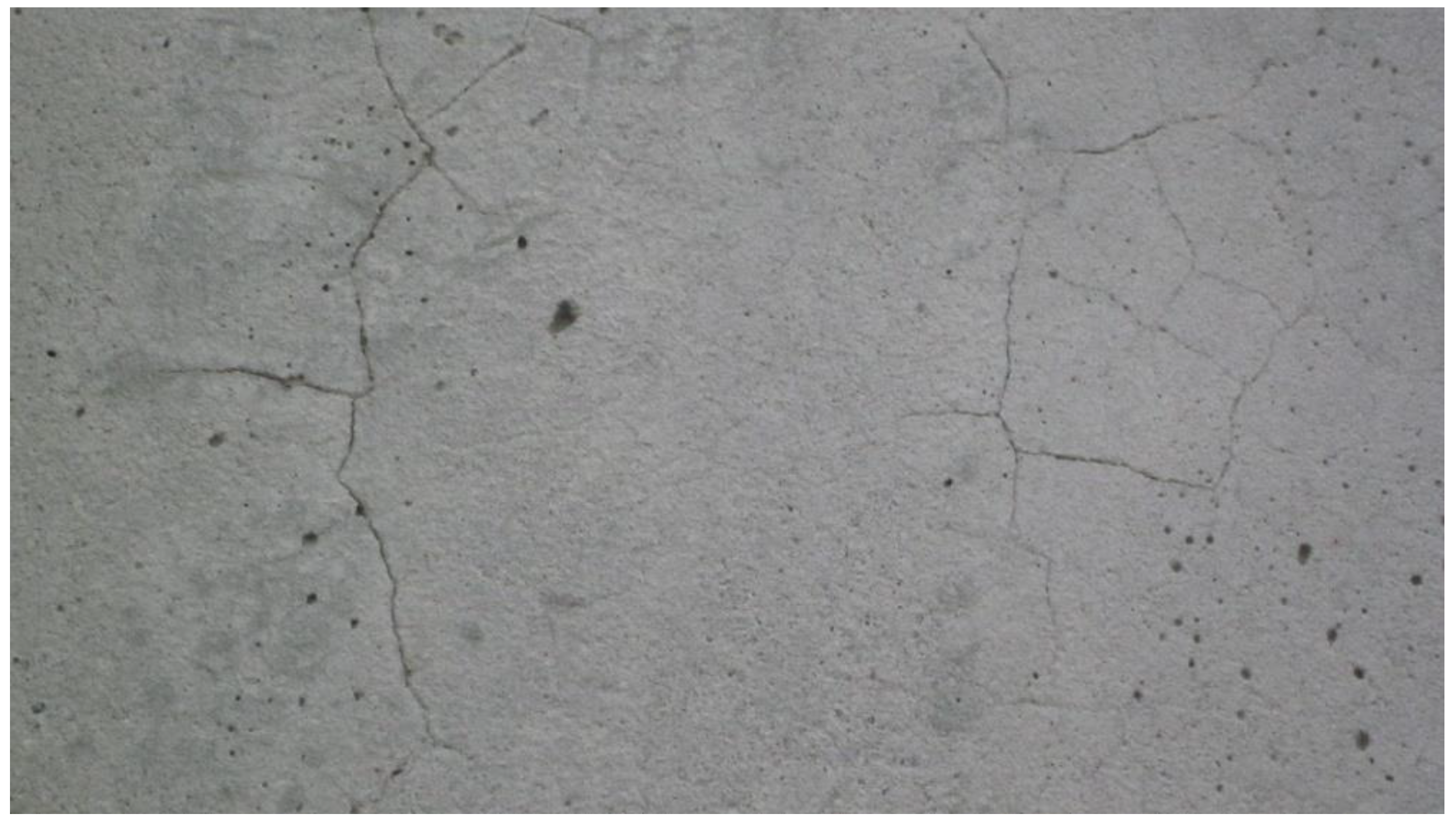
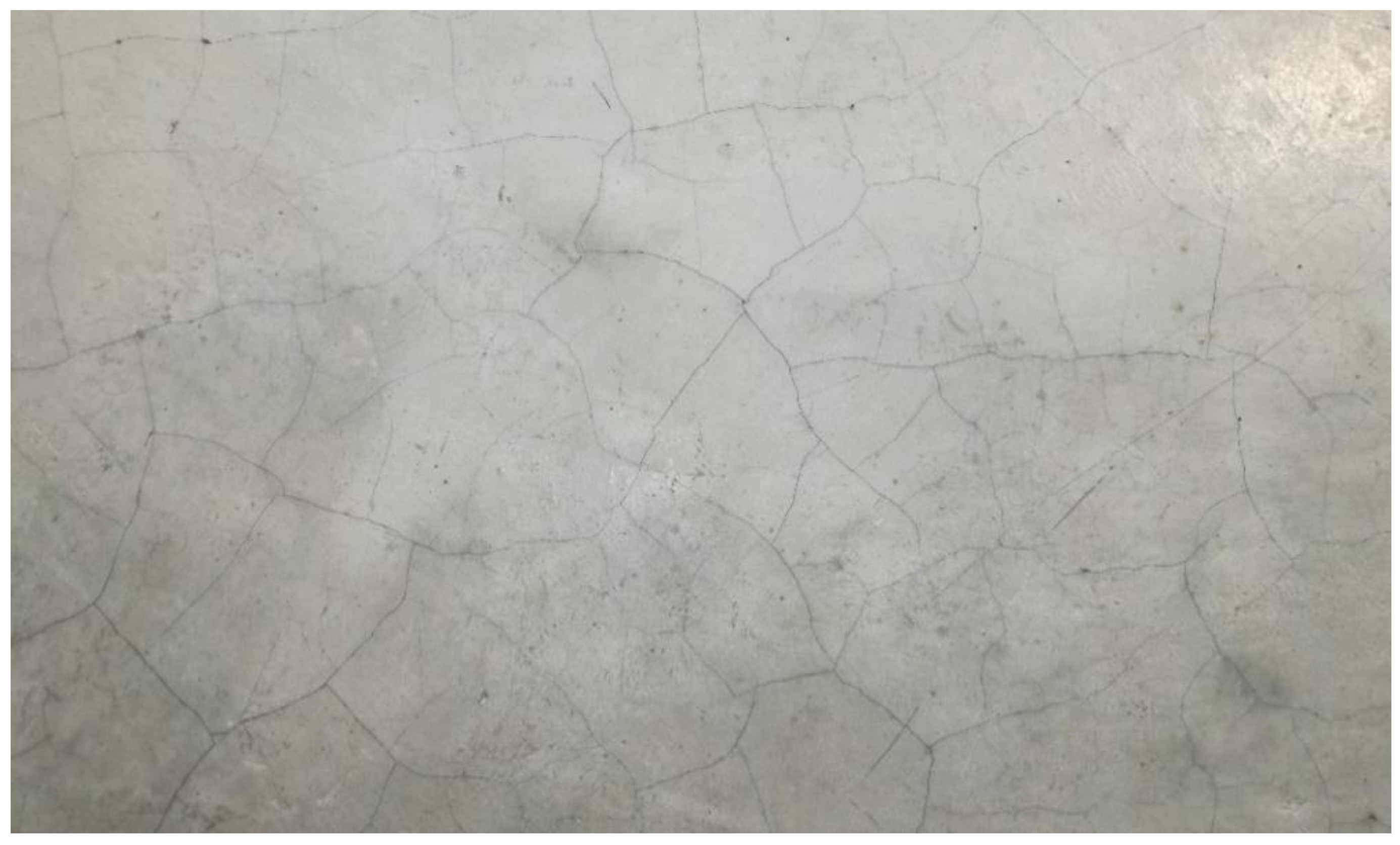
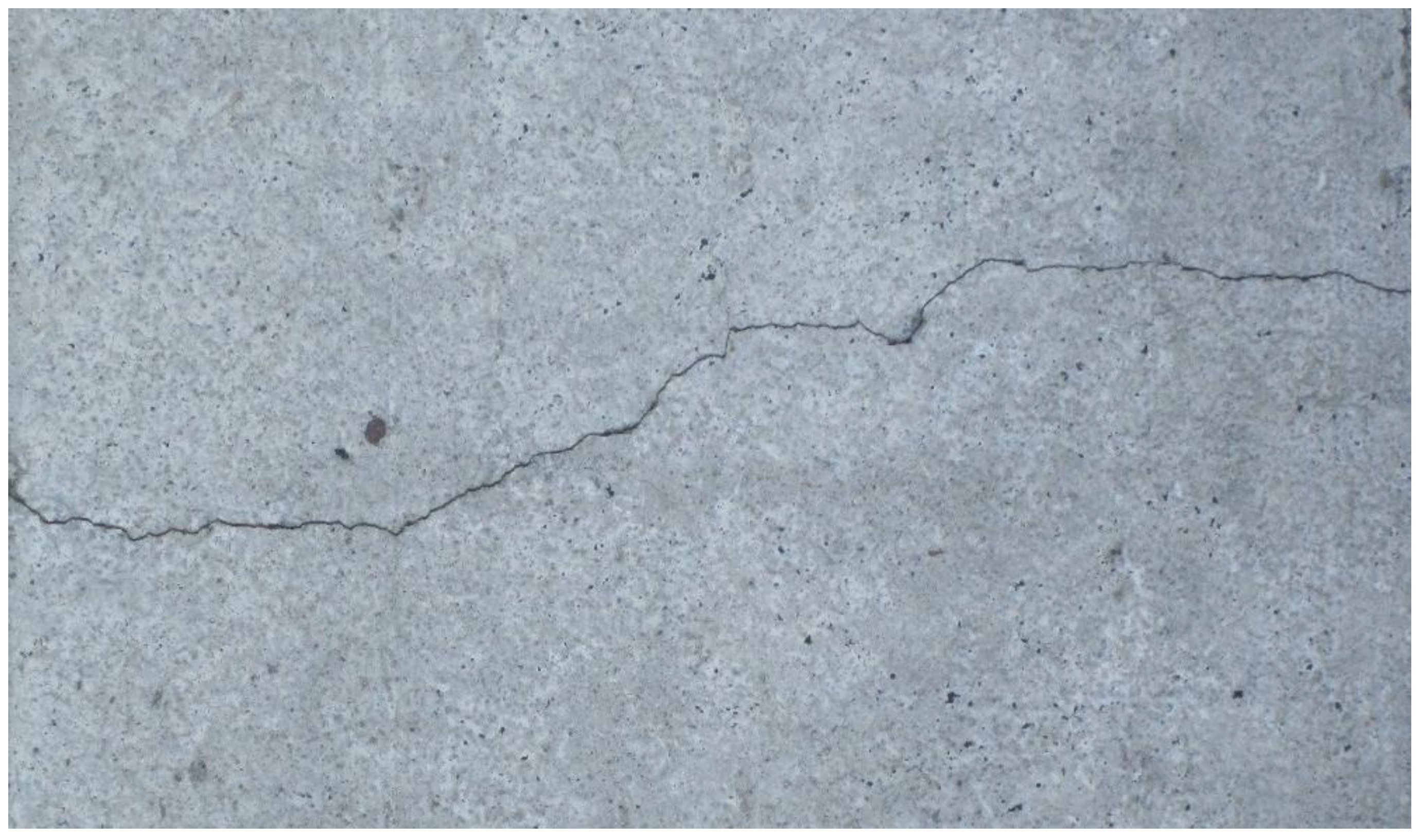
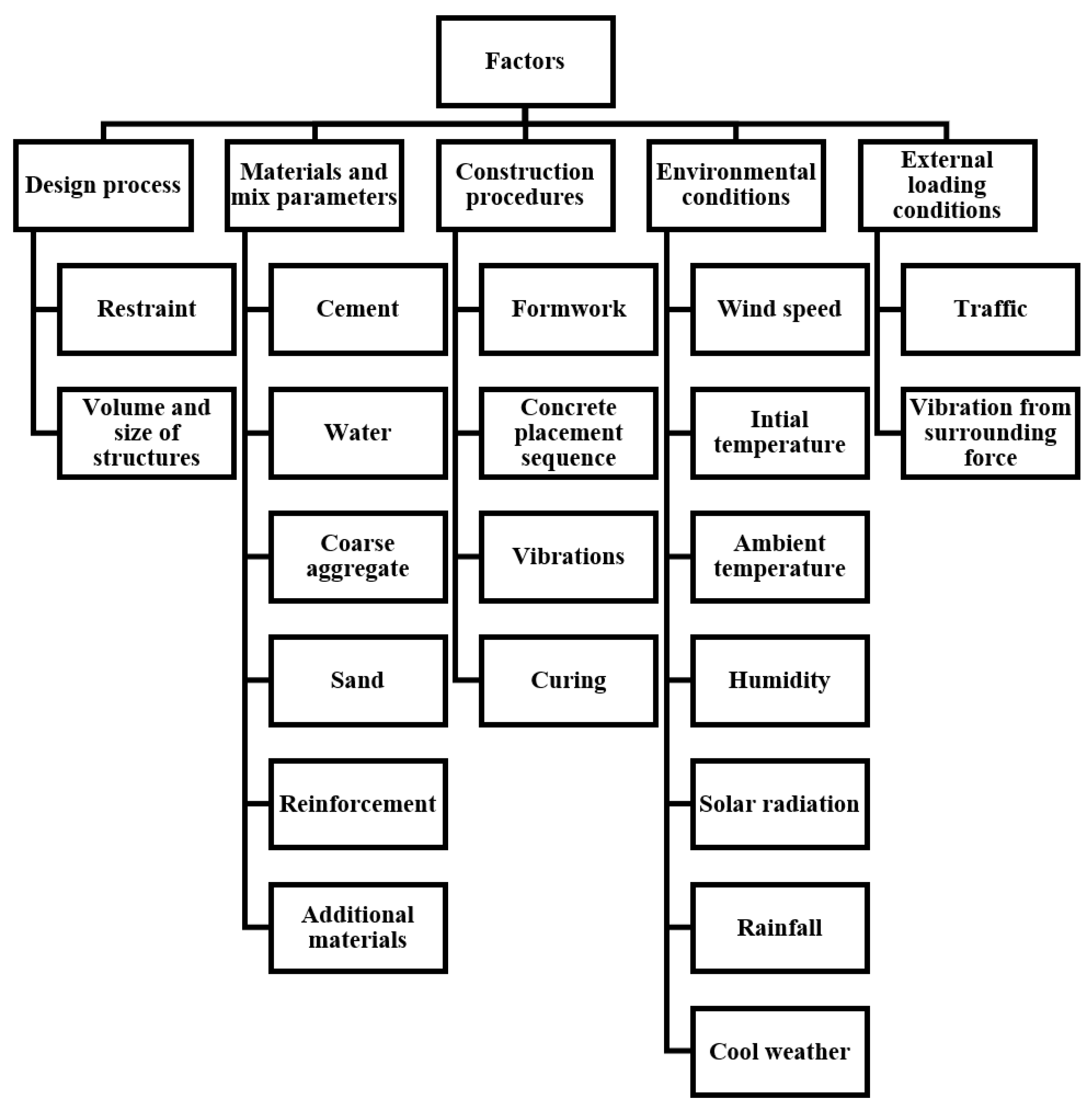
| Properties | Factors |
|---|---|
| Thermal Properties: | |
| Heat of hydration | The type, total content, and chemical composition of cement; the ambient temperature and the admixtures used. |
| Specific heat capacity | The mixture composition, moisture content, and ambient temperature. |
| Thermal conductivity | The density, water content, temperature, and mineralogical characteristics of aggregates. |
| Thermal diffusivity | The aggregate type used and water content. |
| Coefficient of thermal expansion | The type and content of cement, the type of aggregate, and water-to-cement ratio; the age, temperature, and relative humidity of concrete. |
| Mechanical Properties: | |
| Compressive strength | Calcium silicate hydrate (CSH) gel/space ratio, water-to-cement ratio, the type of cement, the presence of additives, and curing condition. |
| Tensile strength | The type, density, and grading of aggregate; curing type and concrete age. |
| Modulus of elasticity | Concrete temperature, water-to-cement ratio, cement type, aggregate properties, and curing conditions. |
| No | Reference | Thermal | Mechanical | Chemical | Hygroscopic |
|---|---|---|---|---|---|
| 1 | de Borst and Van den Boogaard [81] | Y * | Y | - | - |
| 2 | Emborg and Bernander [9] | Y | Y | - | - |
| 3 | Ulm and Coussy [84] | Y | Y | Y | - |
| 4 | Ulm and Coussy [85] | Y | - | Y | - |
| 5 | Faria, Azenha, and Figueiras [86] | Y | Y | - | - |
| 6 | Gawin, Pesavento, and Schrefler [87,88] | Y | Y | Y | Y |
| 7 | De Schutter [89] | Y | Y | Y | - |
| 8 | Azenha, Faria, and Ferreira [90] | Y | Y | - | - |
| 9 | Li et al. [91] | Y | Y | - | - |
| 10 | Liu et al. [42] | Y | Y | - | - |
| 11 | Zhou et al. [92] | - | - | - | Y |
| 12 | Briffaut et al. [71] | Y | Y | - | - |
| 13 | Benboudjema and Torrenti [93] | Y | Y | Y | - |
| 14 | Lawrence et al. [51] | Y | - | - | - |
| 15 | Wu et al. [94] | Y | Y | Y | - |
| 16 | Briffaut et al. [95] | Y | Y | - | - |
| 17 | Kang et al. [96] | Y | - | - | Y |
| 18 | Nehdi and Soliman [97] | - | Y | - | - |
| 19 | Klemczak and Knoppik-Wróbel [98] | Y | Y | - | Y |
| 20 | Park [99] | Y | Y | Y | Y |
| 21 | Yuan and Wan [100] | - | Y | - | - |
| 22 | De Schutter and Taerwe [38] | Y | - | - | - |
| No | Reference | Designing | Construction | ||||||
|---|---|---|---|---|---|---|---|---|---|
| A | B | C | D | E | F | G | H | ||
| 1 | Holt [24] | Y | Y | - | - | - | - | - | - |
| 2 | Klemczak and Knoppik-Wróbel [10] | Y | Y | - | Y | Y | - | Y | - |
| 3 | Krauss and Rogalla [28] | - | Y | - | Y | Y | - | - | - |
| 4 | Emborg and Bernander [9] | - | Y | - | - | - | - | Y | - |
| 5 | Shing and Abu-Hejleh [105] | Y | Y | - | Y | Y | - | - | - |
| 6 | Babaei and Purvis [106] | Y | Y | - | - | Y | - | - | - |
| 7 | French et al. [107] | Y | Y | Y | - | Y | - | - | - |
| 8 | Dippenaar [53] | Y | - | Y | Y | - | Y | - | Y |
| 9 | Combrinck and Boshoff [37] | - | Y | - | - | - | - | - | - |
| 10 | Kwak and Ha [108] | - | - | - | - | Y | Y | - | - |
| 11 | Ah-Sha, Sanders, and Saiidi [36] | - | - | - | - | Y | - | - | - |
© 2018 by the authors. Licensee MDPI, Basel, Switzerland. This article is an open access article distributed under the terms and conditions of the Creative Commons Attribution (CC BY) license (http://creativecommons.org/licenses/by/4.0/).
Share and Cite
Safiuddin, M.; Kaish, A.B.M.A.; Woon, C.-O.; Raman, S.N. Early-Age Cracking in Concrete: Causes, Consequences, Remedial Measures, and Recommendations. Appl. Sci. 2018, 8, 1730. https://doi.org/10.3390/app8101730
Safiuddin M, Kaish ABMA, Woon C-O, Raman SN. Early-Age Cracking in Concrete: Causes, Consequences, Remedial Measures, and Recommendations. Applied Sciences. 2018; 8(10):1730. https://doi.org/10.3390/app8101730
Chicago/Turabian StyleSafiuddin, Md., A. B. M. Amrul Kaish, Chin-Ong Woon, and Sudharshan N. Raman. 2018. "Early-Age Cracking in Concrete: Causes, Consequences, Remedial Measures, and Recommendations" Applied Sciences 8, no. 10: 1730. https://doi.org/10.3390/app8101730
APA StyleSafiuddin, M., Kaish, A. B. M. A., Woon, C.-O., & Raman, S. N. (2018). Early-Age Cracking in Concrete: Causes, Consequences, Remedial Measures, and Recommendations. Applied Sciences, 8(10), 1730. https://doi.org/10.3390/app8101730








